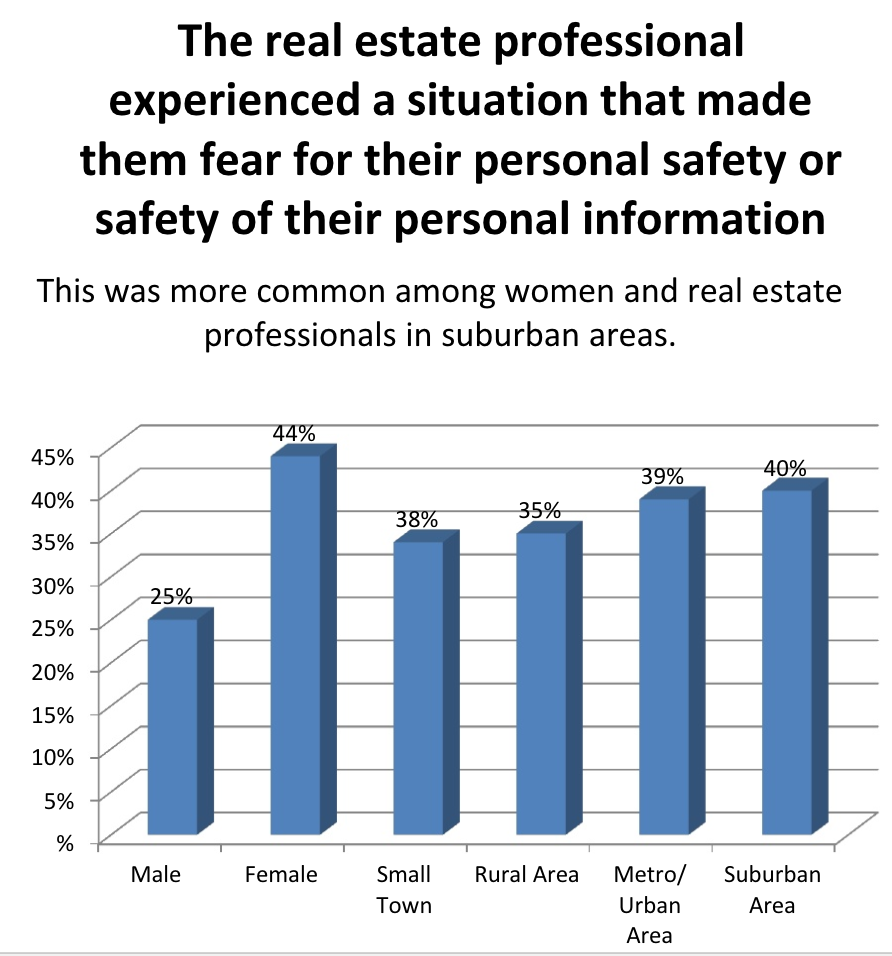In 2013, the most recent year for which statistics were available, 25 real estate professionals were the victims of homicide, according to the Bureau of Labor Statistics. In a 2015 National Association of Realtors® study, 40 percent of Realtors® said they’ve experienced a situation that made them fear for their personal safety or personal information. And, in 2016 alone, 34,500 real estate agents were attacked while on the job.
The majority of real estate transactions follow a normal flow without risk of danger. But, when a new client makes contact, you’re hosting an open house, or showing a property that has been vacant, the risks multiply. A new client could be a criminal searching for an easy victim, an open house invites in anyone off the street into a situation where they expect to find you alone, and vacant buildings could be used as crash pads for criminals.

Most real estate professionals are well aware of the potential dangers of the job. Many carry self-defense devices or have taken self-defense training courses. It’s easy to fall into a rut if nothing happens to put you on edge. That’s why it’s best for agents to follow safety protocols during all parts of the selling and buying process.
First Meetings
For starters, create a checklist to identify any potential threats a new client, who is not a referral or personal relationship, might pose. It can be surprising what’s turned up in an internet search. Asking for a client to show identification or having a first meeting in a neutral location, like a coffee shop, are good ways to verify intentions and that a person is who he or she is claiming to be.
Open Houses
When hosting an open house, consider installing door open alerts on entrances so you can easily hear when someone enters or exits. Set up portable security cameras in the area of the home where you will be sitting and post a notice at the entry to alert visitors that video surveillance is in use.
Lock up all your valuables out of site, and don’t wear any flashy, expensive-looking jewelry. Keep your cell phone on your person at all times. And, set a fire extinguisher within easy reach of your workstation in the home. In a pinch, you can use it to defend yourself against an attacker.
Vacant Properties
When showing a home that has been vacant for a while, before entering the property, walk around the exterior and check windows and doors for forced openings. If the property has boarded windows or doors, and it is difficult to determine if someone might be squatting inside, walk in prepared. When you enter, leave the front door open. Bring a large high-power flashlight. Call out loudly and make a lot of racket as you enter. Finally, consider carrying a device that you can wear on your belt or carry in a pocket that you can press for immediate help if attacked.

Author Bio:
Chris Holbert is the CEO of SecuraTrac. As the CEO, he is responsible for leading the company’s vision of developing, marketing, and selling a suite of mobile health and safety solutions that bring families closer together and improve employee safety through state-of-the-art location-based services and mobile health technology.


